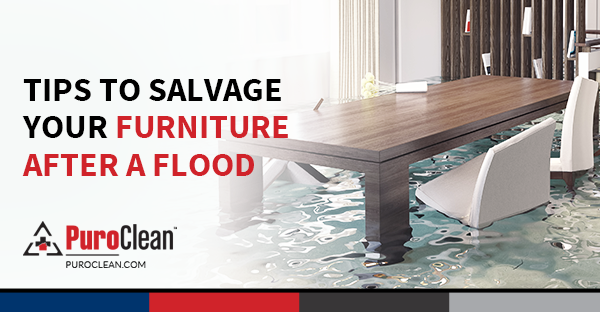After storm damage repairs, many homeowners assume their homes are safe once they look clean. However, appearances can be deceiving. Floodwaters, storm debris, and increased humidity create the perfect breeding ground for bacteria, viruses, and mold spores that remain even after visible cleanup.
Disinfectant fogging is the crucial final step to ensure a truly safe and sanitized living environment. This advanced sanitization method eliminates hidden threats, providing peace of mind and protection for families in Sarasota and Southwest Florida.
What is Disinfectant Fogging?
Disinfectant fogging is a specialized process that disperses a fine mist of powerful disinfectant into the air, allowing it to settle on all surfaces—including hard-to-reach areas like air ducts, behind furniture, and within porous materials. Unlike traditional cleaning methods that rely on wiping and scrubbing, fogging reaches every corner of your home, ensuring comprehensive decontamination.
How Does Disinfectant Fogging Work?
The process of disinfectant fogging follows these critical steps:
- Preparation: The affected area is cleared of unnecessary items, and sensitive materials are covered or removed.
- Application: A fogging machine disperses an EPA-approved disinfectant in ultra-fine droplets, creating a mist that permeates every surface and crevice.
- Dwell Time: The disinfectant is left to settle and eliminate harmful microbes within the prescribed contact time.
- Ventilation: The space is aired out to ensure safe re-entry and proper air circulation.
- Final Inspection: Surfaces may be wiped down if needed, and the space is evaluated to ensure thorough decontamination.
Why Homeowners Need Disinfectant Fogging After Storm Damage
Storms bring more than just structural damage—they introduce biohazards that can persist even after visible cleanup. Floodwaters, in particular, carry bacteria, sewage, and chemicals that pose serious health risks.
The damp conditions following a storm create an ideal environment for mold growth, which can lead to respiratory issues and long-term property damage. Here’s why disinfectant fogging is essential:
- Eliminates Hidden Pathogens: Floodwaters often leave behind bacteria like E. coli and Salmonella, as well as viruses that traditional cleaning may miss.
- Neutralizes Mold Spores: Mold spores spread quickly in humid environments, leading to respiratory issues and structural decay.
- Improves Indoor Air Quality: Fogging removes airborne contaminants, reducing allergens and making the home safer for families, especially those with asthma or weakened immune systems.
- Ensures Comprehensive Decontamination: It reaches areas that traditional cleaning methods cannot, such as air ducts, attics, and crawl spaces.
- Restores Peace of Mind: Homeowners can be confident that their living space is not just clean, but truly safe.
Benefits of Disinfectant Fogging
- Whole-Home Coverage: Reaches surfaces, cracks, crevices, and ventilation systems that traditional cleaning overlooks.
- Fast and Efficient: Can disinfect entire homes quickly, minimizing downtime for homeowners.
- Kills a Wide Range of Pathogens: Proven to eliminate bacteria, viruses (including COVID-19), fungi, and mold spores.
- Non-Invasive and Safe: Uses EPA-approved disinfectants that are safe for families after proper ventilation.
- Prevents Cross-Contamination: Unlike manual cleaning, which can spread bacteria, fogging ensures even distribution of disinfectant without direct contact.
Best Practices for Disinfectant Fogging
To maximize the effectiveness of disinfectant fogging, homeowners should ensure the following:
- Use the Right Disinfectant: Always opt for EPA-registered disinfectants that are effective against bacteria, mold, and viruses.
- Follow Manufacturer Guidelines: Each fogging machine and disinfectant has specific application instructions that must be followed for optimal results.
- Wear Protective Equipment: Professionals use gloves, masks, and goggles when handling disinfectants to ensure safety.
- Allow Adequate Dwell Time: The mist must remain undisturbed for the recommended time to achieve maximum effectiveness.
- Proper Ventilation Post-Treatment: Ensuring fresh airflow after fogging prevents lingering chemical residues.
- Routine Testing and Maintenance: Periodic ATP (Adenosine Triphosphate) testing verifies the effectiveness of fogging in reducing microbial presence.
Conclusion
Disinfectant fogging is not just an extra precaution—it’s a necessity after storm damage restoration. While repairs restore structure and cleaning removes visible dirt, unseen contaminants can still pose health risks. For homeowners in Sarasota and Southwest Florida, disinfectant fogging is the final, crucial step to ensure a safe and healthy home environment. Just because your home looks clean doesn’t mean it’s free from hidden dangers.
Take the final step in home restoration—schedule professional disinfectant fogging today and protect your family from invisible threats. Call 941-877-2288 today or fill this form to get started.




 PuroClean of Bradenton
PuroClean of Bradenton